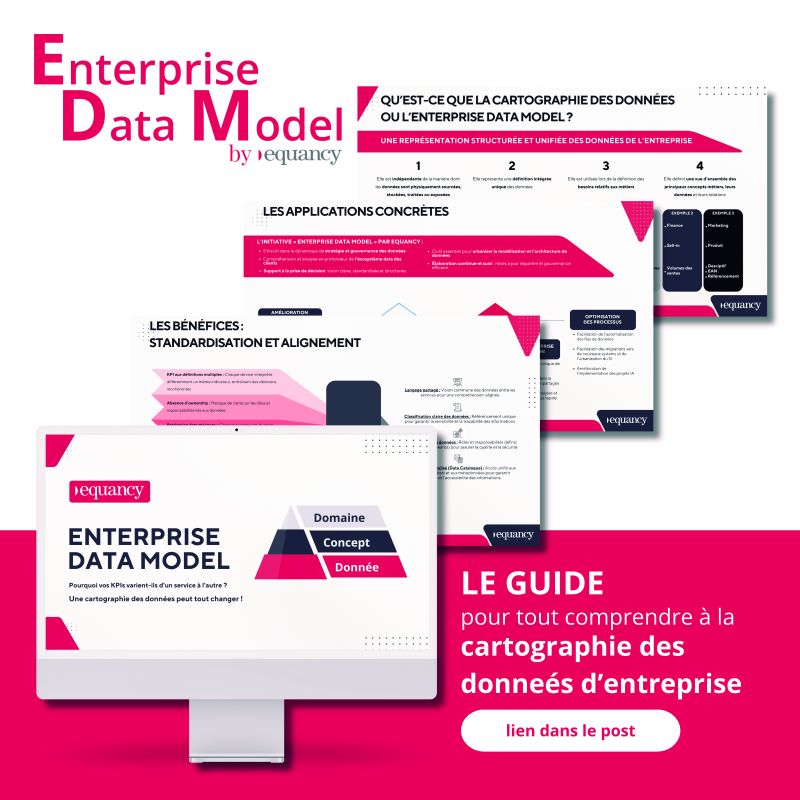Mastering the customer journey: Insights, trends and best practices
Mastering the customer journey: Insights, trends, and best practices
In a recent webinar, industry leaders from Center Parcs, Funnel, and Equancy shared valuable insights into the evolving landscape of customer journeys. From e-commerce trends to conversion rate optimization (CRO) best practices, the discussion covered a range of topics aimed at enhancing the customer experience.
Below, we break down the experts’ perspectives and actionable strategies discussed during the session.
5 trends shaping the customer journey
Agnès Mendy and Papa Sangoné Sall from Equancy, a data and digital transformation consulting firm, highlighted five current trends influencing the customer journey:
1. Corporate social responsibility (CSR): 85% of customers are more inclined to engage with businesses that align with their values. Implementing CSR initiatives, such as carbon footprint offset options, ranking shipping options by carbon impact, inclusivity through accessibility, and offering second-hand options, can significantly impact consumer choices.
2. AI chatbots: Leveraging advanced AI chatbots can lead to a 30% reduction in customer support costs, according to a study by IBM. Multilingual, emotionally intelligent AI, which understands context, can enhance user interactions, providing personalized recommendations and assistance.
3. Omnichannel and customer data platforms (CDPs): CDPs, when utilized effectively, can reduce customer churn rates by up to 10% (CDP Institute 2023). Unifying customer data across channels ensures a consistent and targeted message, making CDPs integral to modern marketing technology stacks.
4. Trust and privacy: Respecting user privacy is paramount and requires trust between your business and the customer. Building that trust goes beyond regulatory compliance and involves creating transparent, user-friendly experiences and fostering positive customer engagement.
5. The customer voice: Incorporating live testimonials and feedback throughout the customer journey builds trust and strengthens the customer-business relationship. Tools like Hotjar and GetFeedback aid in collecting valuable insights that can help enhance the customer experience.
Best practices for conversion rate optimization (CRO) and 8 rules for experimentation
Erik Werner from Funnel shared essential practices for CRO and outlined eight rules for successful experimentation:
1. Understand when not to run an A/B test: Practical constraints, such as low traffic or insignificant changes, may make A/B testing impractical. Recognizing these limitations is crucial for effective experimentation.
2. Have full control of key customer journey flows: Ownership of the steps to be optimized is essential, requiring control over code, tracking, and organizational aspects. Stakeholder collaboration is key to CRO success.
3. Conduct thorough research: Blend qualitative and quantitative research methods using tools like Hotjar, Fullstory, Maze, Hubspot, and GA4 to gain comprehensive insights into customer behavior.
“It's not just about relying on Google or subjective opinions. It's important to conduct thorough research using all available tools,” said Erik.
4. Narrow down experiments: Focus experiments on specific, controllable areas to ensure accurate results. Avoid changes that could impact the experiment's accuracy. Erik pointed out that many experiments fail to produce accurate results, because of changes in other areas, such as a new acquisition strategy or a change on the home page. To prevent this from happening, isolate the experiment and inform the organization.
5. Plan the experiment: Utilize calculators to determine sample size, minimum detectable effect, and experiment duration. Tools like CXL's AB+ Test Calculator and AB Tasty Sample Size Calculator can aid in planning.
6. Prioritize using the PIE model: Prioritize experiments based on Potential, Importance, and Ease to maximize impact with minimal effort. With limited resources, it’s imperative to choose the experiments that give you the “biggest bang for the buck.”
7. Tie experiments to revenue: Connect web metrics with revenue data to demonstrate the impact of CRO on the bottom line.
Funnel, for example, has developed a Looker dashboard combining experiment data with revenue data in Hubspot. The team uses experiment data as a parameter in a Hubspot form, connecting it with Hubspot data, and sending it to their dashboard via Funnel. This allows them to examine the experiment quality throughout the entire sales process in Funnel, which has been a game-changer.
8. Analyze and share: Thoroughly analyze results, leveraging tools like Looker, and share insights to foster a data-driven culture within the organization.
It is essential to comprehend the impact of a situation, which may be a surprisingly complex task. Obtaining a result that fails to provide the entire story is possible. Therefore, delving into the particulars, scrutinizing every aspect, and discussing it with others is necessary to fully understand the situation.
Center Parcs' approach to customer journey enhancement
Laurent Lemercier, head of e-merchandising and web product at Center Parcs (a European network of holiday villages), shared their approach to refining the customer journey:
1. Understand your customer: Prioritize discovery through user tests, usability testing, surveys, and direct communication to comprehend user needs and perceptions.
Laurent emphasizes the importance of understanding your customer from the outset. He gives an example of a baby mobile hanging over the crib. Parents might love it, but from the baby's perspective, it’s just a bunch of animal butts. The story's point is that you must consider every possible customer perception.
2. Collect feedback and Insights: Leverage internal panels, customer surveys, call center listening, and collaborative feedback sessions to gather qualitative and quantitative insights.
At Center Parcs, they have their own European internal panel consisting of 25,000 volunteers who are loyal and engaged customers. Recently, they conducted a survey about their loyalty program, which received a fantastic 20% response rate, according to Laurent. The panel is used by all departments, including revenue management, pricing, CSR, and product marketing, to co-create and improve their services.
3. Use analytics tools: Visualize user journeys to detect friction points and unexpected drop-offs from the conversion funnel. Use feedback tools to gather customer feedback for issue resolution and product development.
Center Parcs utilizes Contentsquare, which is a tool for customer experience analytics. It visually showcases the user's journey from entry to exit. Additionally, they use on-page behavior KPIs such as scroll rate, tap rate, and session replays, which provide further insights. They also use Hotjar regularly to obtain user feedback. Based on this feedback, they can fix any potential issues promptly or add new ideas to their backlog.
4. Dogfooding: Encourage the team to use their own product, as well as organize customer meet-ups and workshops for valuable feedback and relationship building.
Center Parcs applies this principle by going directly to its parks and having a real guest perform usability testing on a prototype. Then, they can optimize the pre-check-in process on the application by, for example, listening to the guest's feedback and testing new iterations with new clients.
“Our discovery process is linked to a specific project or can be entirely exploratory,” said Laurent.
5. Data alerting: Implement AI-driven alert systems to monitor key performance indicators, ensuring prompt identification and resolution of issues, particularly in web performance.
“Data and monitoring are important, but alerting is even better,” said Laurent. “By using AI to alert us on Contentsquare, we can identify abnormal changes in KPIs that we've defined, such as loading time. When we receive an alert, we deep dive into a dashboard to identify where the issue is coming from.”
According to Laurent, web performance is the number one factor that frustrates users. “Slow web pages and long wait times can increase someone's heart rate by 38%, which is equivalent to watching a horror movie alone at home”.
Based on the UX hierarchy pyramid, web performance is the most important factor in user experience. “Faster websites lead to better conversion rates, which is crucial for businesses as acquisition costs continue to rise.”
A data-driven culture for customer success
To master the customer journey, you need to have a solid foundation that's based on understanding trends, implementing best practices for CRO, and adopting a customer-centric approach. By prioritizing experimentation, gaining a deep understanding of your customers, and continually optimizing the customer journey, businesses can generate more revenue. However, if you find this process to be overwhelming, take the advice of our CRO specialist: "Start small, be patient, and have fun with it."
Agnes Mendy
Digital & Media Analytics Director




